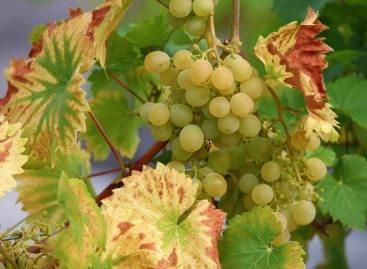Could crickets be a secret ingredient?
In recent days, Nébih has received many requests: is it true that producers will soon be able to add “crickets and beetles” to food without any labeling? The news in this form is absolutely not true! In our article, we have collected the most important current information related to the topic.

(Photo: Pixabay)
Insect-based foods are so-called are considered new food*. This category includes foods for which it has not been proven that they were traditionally consumed in the EU before May 15, 1997. New foods can only be placed on the market after strict control and approval at the EU level. A comprehensive assessment of the safety of new ingredients is carried out by the European Food Safety Authority (EFSA), after which a panel made up of representatives from member states decides on approval. In case of a positive decision, the EU Commission issues the marketing authorization.
The Hungarian position
Hungary did not support the authorization of placing insect ingredients on the market as a new food. There is no serious protein deficiency, so our country does not consider it justified to consume insects as food in the EU. However, since the majority of the member states voted for the requests, the Commission accepted them.
It is important to emphasize that the use of approved insects in food is not mandatory, it is only a new, optional ingredient.
Permitted insects
There are currently six valid “insect licenses” in the EU:
Novel food Date of authorisation
Dried Tenebrio molitor larva (common mealybug)
June 22, 2021
Locusta migratoria (oriental locust) in frozen, dried and powdered form
December 5, 2021
Frozen, dried and powdered mealworm larvae (Tenebrio molitor larvae)
March 1, 2022
Acheta domesticus (house cricket) in frozen, dried and powdered form
March 3, 2022
Partially defatted powder produced from Acheta domesticus (house cricket).
January 24, 2023
Frozen, pulped, dried and powdered Alphitobius diaperinus larvae (litter weevil larvae)
January 26, 2023
These can only be placed on the market in strict compliance with the regulations in the licenses (e.g. product categories in which they can be used, maximum quantities, labeling requirements and specification requirements, such as food withdrawal before processing). For example, 100g of “partially defatted powder produced from Acheta domesticus (house cricket)” multigrain bread may contain no more than 2g.
Must be marked
As with all ingredients, permitted insects must be marked on food packaging. The executive decrees authorizing the placing on the market also contain the exact name to be indicated. In addition, where relevant, they also have a mandatory reference to allergic cross-reactions.
Mandatory allergen labels
The packaging of foods containing mealybug larvae and mealybug larvae must indicate that the ingredient may cause allergic reactions in consumers who are known to be allergic to crustaceans and their products, as well as to dust mites. Foods containing house crickets and oriental locusts must be labeled to indicate that the ingredient may cause allergic reactions in consumers known to be allergic to crustaceans and molluscs and their products, as well as mites. Allergic cross-reaction markings are also mandatory for non-prepackaged foods. For example, in a commercial unit, this can be indicated on the shelf label, but dedicated digital devices can be placed, or information can be displayed on who the affected parties can ask for information about allergens.
Disguised as an e-number?
Just as you don’t have to worry about concealing the presence of insects, you don’t have to worry about manufacturers hiding the presence of insects in their products by “disguising” them as E-numbers. Only food additives** have an E number. Insects are not included in this range, they can be used as an ingredient rather than as an additive, and they are authorized as a novel food.
Nébih
Related news
Safe holiday preparations: food safety tips for your Christmas menu
🎧 Hallgasd a cikket: Lejátszás Szünet Folytatás Leállítás Nyelv: Auto…
Read more >Layers of problems
🎧 Hallgasd a cikket: Lejátszás Szünet Folytatás Leállítás Nyelv: Auto…
Read more >Increased laboratory capacity to combat grapevine golden yellow disease
🎧 Hallgasd a cikket: Lejátszás Szünet Folytatás Leállítás Nyelv: Auto…
Read more >Related news
Christmas shock in commerce: for the first time, we can pay with bank cards in fewer places
🎧 Hallgasd a cikket: Lejátszás Szünet Folytatás Leállítás Nyelv: Auto…
Read more >Hungarian Confectionery Manufacturers Association: trends in 2025 and prospects for 2026
🎧 Hallgasd a cikket: Lejátszás Szünet Folytatás Leállítás Nyelv: Auto…
Read more >Most grocery chains will be open until noon on December 24th
🎧 Hallgasd a cikket: Lejátszás Szünet Folytatás Leállítás Nyelv: Auto…
Read more >






